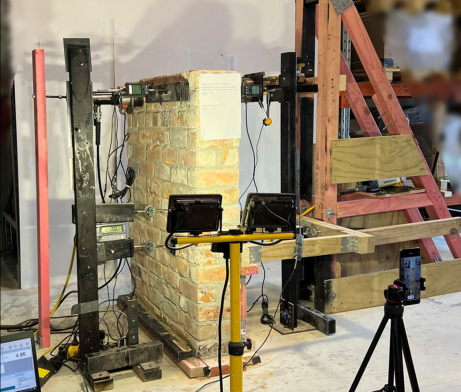Jerry Y. Zhai, Francisco Galvez, Eyitayo A. Opabola, Robert Hudson, David Sommer, Dmytro Dizhur
i Postdoctoral Scholar, Department of Civil and Environmental Engineering, University of California Berkeley, Berkeley, California, jerryzhai@berkeley.edu
ii Structural Engineer, DIZHUR Consulting, Auckland, New Zealand, francisco@dizhur.consulting
iii Assistant Professor, Department of Civil and Environmental Engineering, University of California Berkeley, Berkeley, California, tayo@berkeley.edu
iv Structural Engineer, Python Fasteners, Seattle, Washington, robert@pythonfasteners.com
v Associate Principal, Degenkolb, Seattle, Washington, dsommer@degenkolb.com
vi Structural Engineer, DIZHUR Consulting, Auckland, New Zealand, dmytro@pythonfixings.co.nz
ABSTRACT
Seismic retrofit of unreinforced masonry (URM) parapets can provide enhanced seismic performance and collapse prevention. While widely adopted retrofit methods (e.g. braced systems) have been shown to be effective, they often require tradeoffs in the form of high installation and fabrication costs, risk of water ingress due to roof penetration, and disturbance of historical aesthetic. This paper presents a simple and cost-effective retrofit system consisting of high-strength mechanical fasteners that are drilled and mechanically anchored through the top of the parapet to an effective embedment below the diaphragm-to-wall connection. To demonstrate the effectiveness of this retrofit system, a series of monotonic and cyclic tests were undertaken on as-built and retrofitted URM double-wythe parapet specimens. The results showed that retrofitted parapets had an up to 25x increase in out-of-plane strength. The ultimate strength and failure mode of retrofitted specimens was influenced by wall aspect ratio, diaphragm connection strength, anchor spacing, and effective anchor embedment.
KEYWORDS: Unreinforced masonry (URM) parapet, mechanical anchors, out-of-plane strength, seismic strengthening, retrofit.
090-Zhai.pdf



